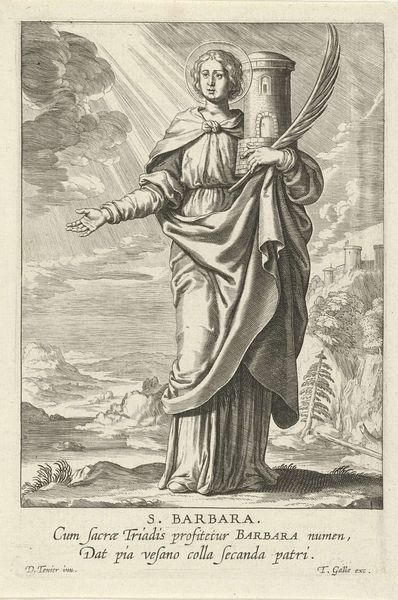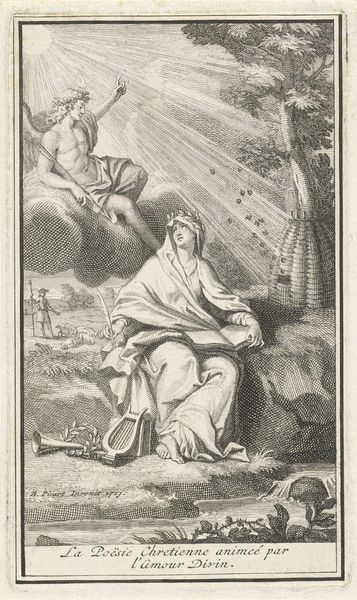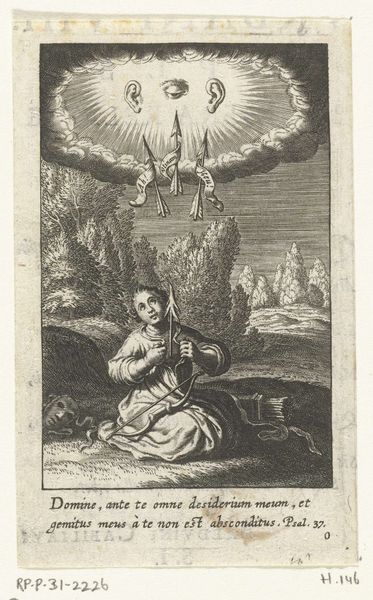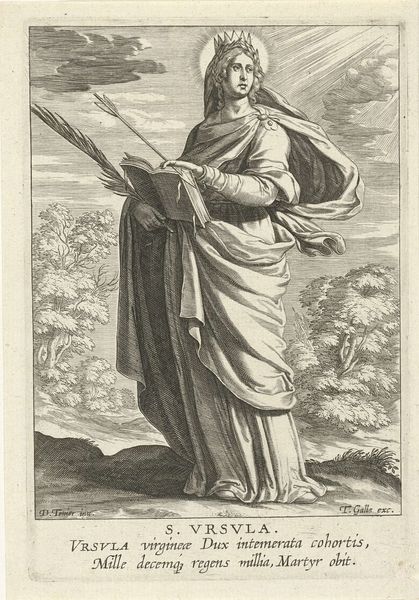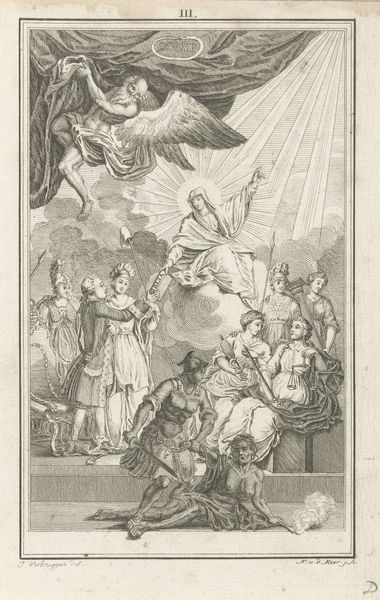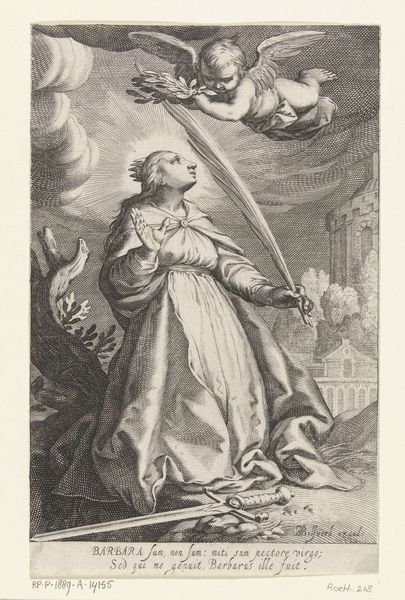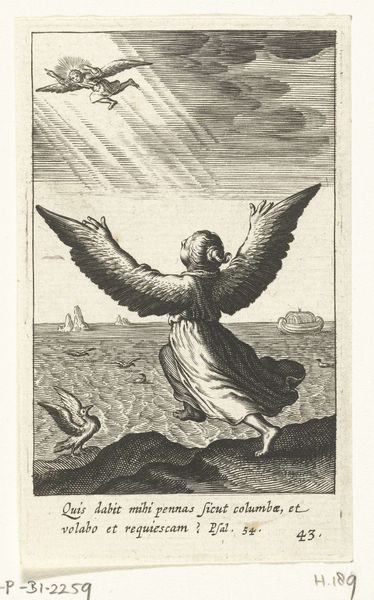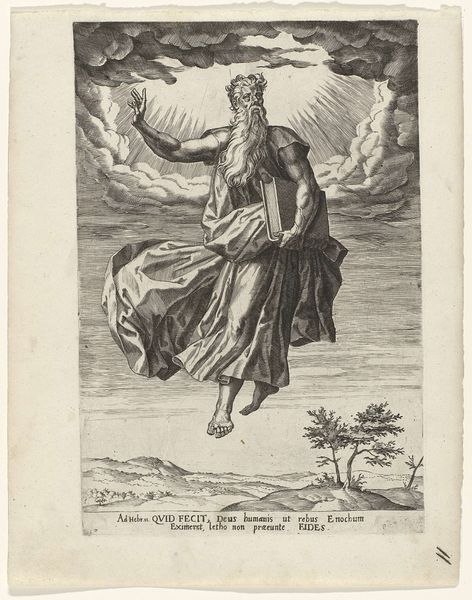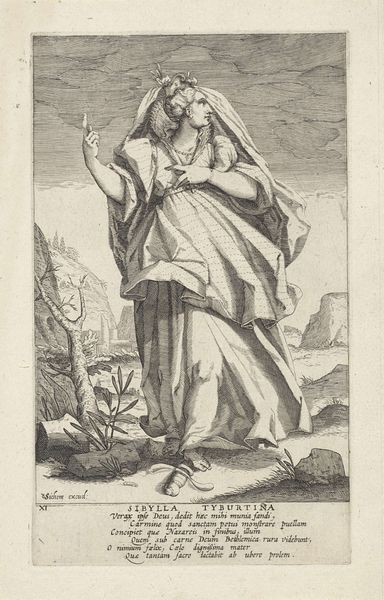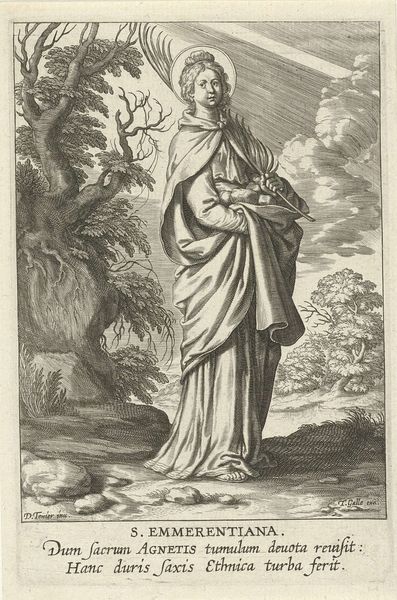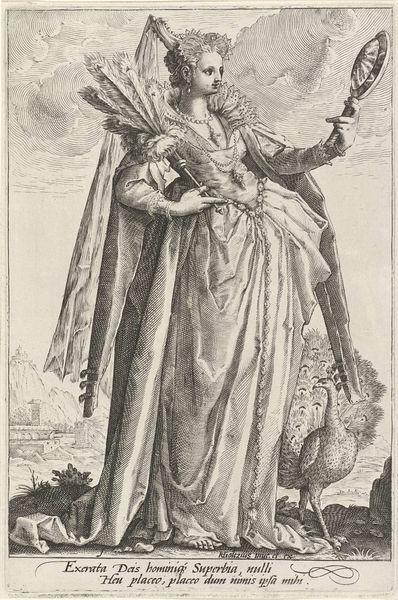
print, engraving
#
allegory
#
baroque
# print
#
old engraving style
#
figuration
#
line
#
history-painting
#
engraving
Dimensions: height 133 mm, width 93 mm
Copyright: Rijks Museum: Open Domain
Editor: Here we have Cornelis Galle I’s "H. Apollonia," an engraving from between 1586 and 1650. It has a rather serene feeling, despite the, uh, dental instrument she’s holding. What strikes you most about this print? Curator: I think it is important to address how the artist is depicting a historical figure through a distinctly gendered and religious lens. Apollonia, the patron saint of dentists, becomes a symbol of feminine virtue and religious piety through Galle's use of baroque conventions. We need to ask, who is being positioned as the ideal subject, and at what cost? Editor: Can you elaborate? Curator: Certainly. Consider the gaze—her eyes are directed upward, signaling a divine connection, a submission to religious authority. This pose reinforces traditional expectations of women, emphasizing their role as passive recipients of divine grace rather than active agents of change. Do you notice anything else about the setting? Editor: I see a pretty typical landscape, almost like a backdrop. There are angels crowning her above. Curator: Precisely! The landscape naturalizes her sainthood. She's presented as intrinsically connected to an idealized version of nature. This connection can be interpreted as subtly reinforcing patriarchal control by associating women with nature, therefore diminishing women's status in the social and political realms dominated by men. But who determined those patriarchal controls and their relationship to images like this one? Editor: That makes me see how images such as this aren’t always so innocent, that context shifts everything. Curator: Exactly. And understanding these nuances helps us decipher not just the artistry but also the power dynamics inherent in the representation of figures like Saint Apollonia, allowing us to have a much more layered relationship with her as the work travels through time. Editor: I never would have thought of it that way. Thank you!
Comments
No comments
Be the first to comment and join the conversation on the ultimate creative platform.
